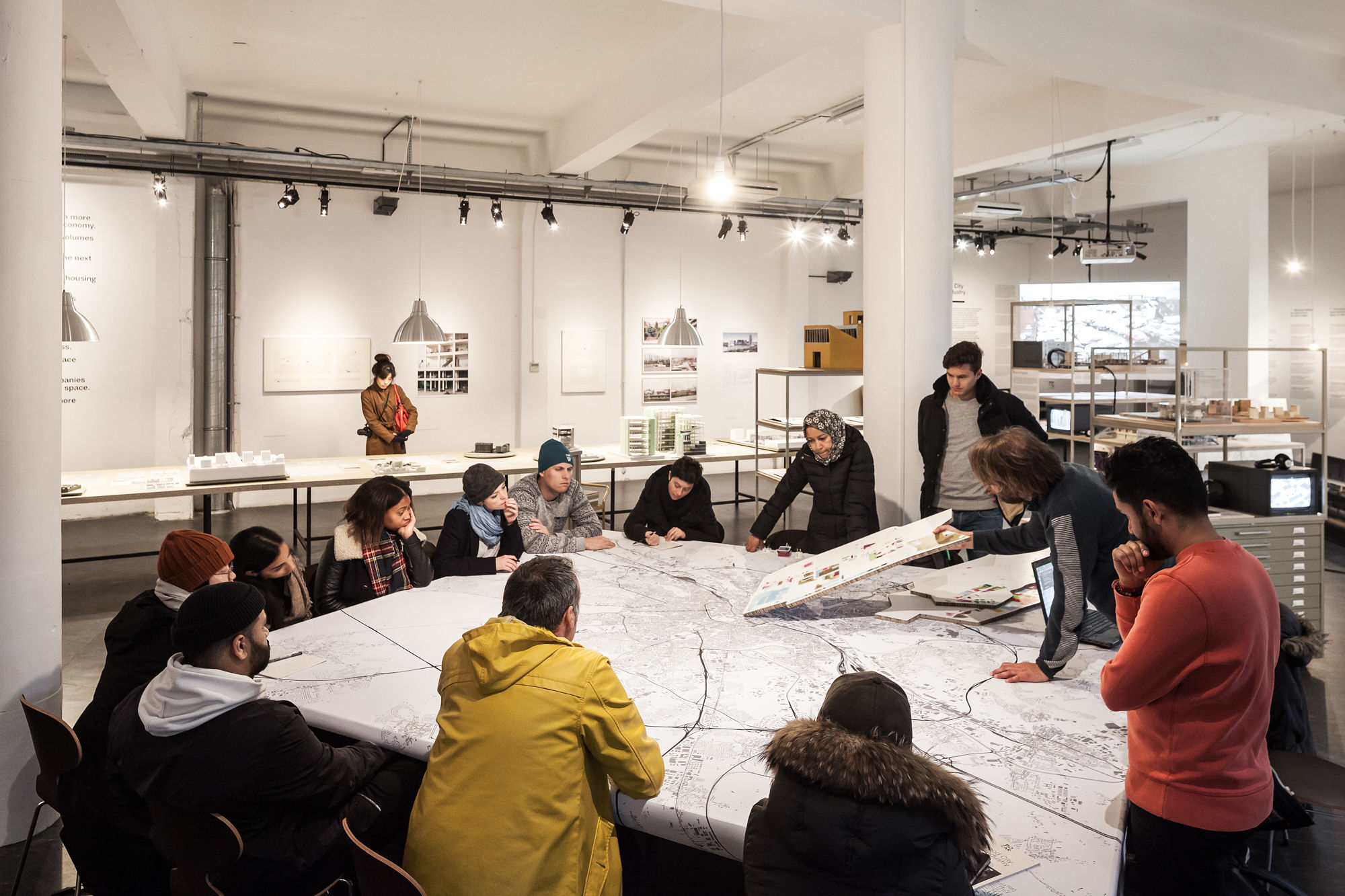Most European cities convert their former industrial urban areas into residential districts with shops and offices, and push productive activities ever further away from the city. Brussels-Capital Region has opted for a different strategy: industry is afforded a prominent position in the urban project for the Canal Zone. Flanders is also looking for tools to anchor the economy of tomorrow in the city of today. The exhibition A Good City Has Industry in BOZAR presented the results of the IABR Atelier Brussels – The Productive Metropolis. This research by design and knowledge exchange atelier was founded by Flemish and Brussels actors in association with the International Architecture Biennale Rotterdam and Architecture Workroom.










Photography and cartography map out the different types of businesses, offering an insight into the business clusters, and how deeply they are embedded in the urban fabric – an important tool for obtaining an idea of the economy of the city. Models and drawings illustrate the research by design developed by designers along with public and private actors. And specific practical examples provide opportunities and strategies for a city that reconciles living and working, and that makes room for an economy that is inclusive and circular, which means: a focus on knowledge and the manufacturing industry, with jobs for both the highly skilled and low-skilled.
In our attempt to make the city an appealing place to live and work, we have driven industry out of the city. Productive areas are disappearing to the outskirts of the city or to low-wage countries, which means the city becomes a place of consumption without production, and this is problematic.
Why do we need industry in the city? If we continue to invest in an outdated economic model of motorways and industrial parks far from the city, we create huge traffic jams and pollute the environment. Moreover, we make ourselves dependent on low-wage countries by pushing production there, which means local production can no longer compete with the low prices. The current focus is on a monoculture of employment, while not everyone is able to work in the knowledge economy or in the creative or tertiary sector. It is important to close the gap between thinkers and makers. Local quality and craftsmanship is sought after once more. And the circular economy is necessary and promising. All reasons why pushing industry away from the city is not a good idea.
In and around Brussels today another city is being built: the industrial activities and infrastructure that still feature prominently are a unique asset for the future. The city and its outskirts are getting a new lease of life by making space for innovative production activities, jobs for the low-skilled and the circular economy.
Brussels and Flanders are already embarking on the transition from a post-industrial city to a productive city: lots of projects have also been launched that anchor production in the urban fabric. Some are set up at the initiative of the different authorities, others grow from bottom-up; from organisations, private actors or citizens' initiatives. It is pioneering work that could serve as inspiration for Europe as a whole.
One example is the Canal Plan, a tool for revitalising the former industrial district around the canal. It supports the existing economic and industrial activities, boosts the public space, creates new homes and stimulates the mix of functions and population groups.
The exhibition A Good City Has Industry bundles existing urban strategies and ongoing projects, but also moves up a gear: architects, policy-makers, experts, developers and entrepreneurs work together in specific places and projects in Brussels and Flanders. This forms the basis for the ten keys presented in the exhibition for developing the productive city of the future.
Ten keys for developing the productive city:
1. Developing a productive city requires a more refined idea of the urban economy
2. Cherish the generosity of existing industrial buildings and infrastructure
3. Lots of small initiatives create the urban economy of the future
4. Develop housing tailored to industrial spaces – and not the other way around
5. Combining housing with industry requires innovative architectural compositions
6. Make urban industry visible in the public space
7. Public space connects thinkers and makers in a solidary city
8. Sharing infrastructure and facilities creates extra space for the urban economy
9. Coalitions between businesses optimise scarce space
10. A circular urban economy retains more added value in the city
The exhibition was accompanied by an extensive programme of debates, lectures and masterclasses.

|
A Good City Has Industry; Guide-NL | 18 MB |

|
A Good City Has Industry; Guide-FR | 18 MB |






